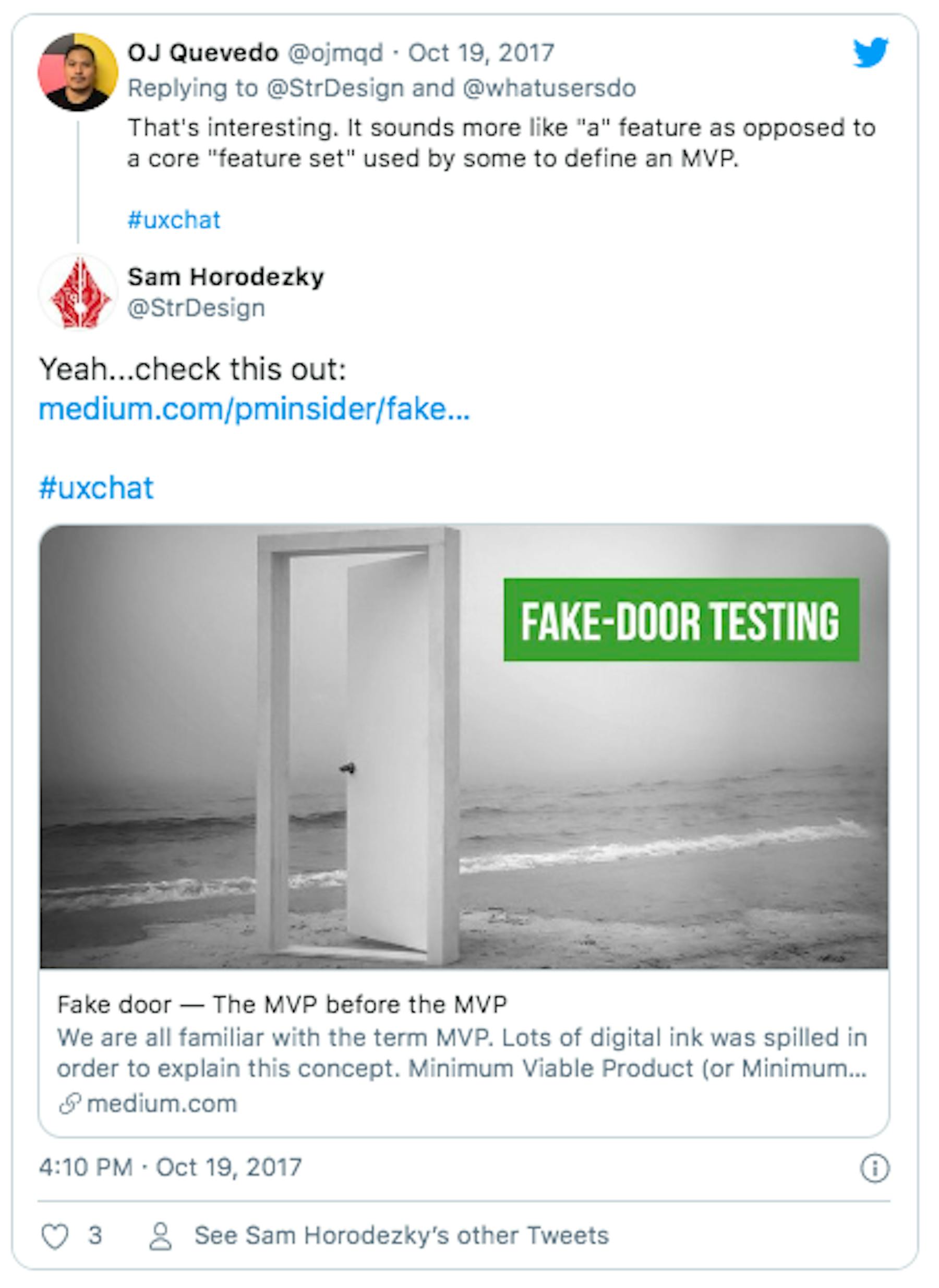A brief guide to Minimum Viable Product (MVP) in UX

If you're new to the world of UX and product design, you may be confused by how often the phrase "MVP" is thrown around. Let's take a deeper look into this important UX concept by seeing what Twitter's UX community has to say about it.
What is a Minimum Viable Product (MVP)?
In product development, the minimum viable product (MVP) is a product with just enough features to be considered operational. It achieves the purpose it was built for in the most basic way.
MVPs are useful because they allow teams to test a product cheaply, at an early stage, so that they can iron out problems and gain feedback for future iterations.
It helps to think about MVP in terms of transportation. If your goal is to create something that moves you from point A to point B, imagine gradually evolving from a tricycle, to a bicycle, to eventually a car. Each iteration transports you somewhere. They all serve the user need at each stage, becoming more and more effective as time goes on.
Another popular and highly successful example of an MVP is Zappos founder Nick Swinmurn’s original lean approach to his online shoe store.
Zappos started with the founder going to local shoe-stores and asking owners if he can take pictures of the shoes to put them online, and then promised to buy them from the store when people bought them from his site. It wasn’t a fancy website, it was just pictures of shoes online. It was enough to see if people were interested, and enough to prove the idea had potential.
It may not have been the final website with all the logistics in place, and it was probably exhausting for Swinmurn to run at first. But it worked. And that was enough to build momentum. When it comes to building a useful MVP: everything has to work as it should, even if it’s in the most basic form.

However, as you’ll see from this Twitter exchange on the subject of MVP, there are a few vagaries around the term.


The MVP before the MVP
The linked article above explains the concept of the ‘MVP before the MVP’ – The Fake Door. This is essentially a clickable button on your digital product, app or website that doesn’t actually go anywhere, but does prove the intent of users.
The social media management platform Buffer used something similar in its earlier iteration where it placed a ‘plans and pricing’ button on its landing page. Buffer was free, it didn’t have any plans or pricing, but seeing if people clicked on the button (which led to an explanation that the plans are not ready yet and the user can leave their email for update) meant they could measure interest.
All of this without going though the time-consuming processes of setting up multiple landing pages, developing or integrating a whole e-commerce or payment system and various other supporting communication tools.
An MVP can save you a whole bunch of time and money.
How do you define user needs for an MVP?
The first step in your journey when creating an MVP is working out who will actually use your product and figuring out what they need.
But what methods of user research do our UX community recommend? Audience insights from AdWords campaigns, data from your own site search, search terms identified by Search Console, your site’s analytics package are great options.


What if it’s a brand new product?
Imagine if your product has never existed before. How do you find out who your potential users are?
Surely any product that is supported by stakeholders and successful in the market needs to have both user needs and business goals in mind?


Perhaps it comes down to this rather blunt fact.

Is prototyping and testing part of building an MVP?
Is there any point in prototyping before creating the actual MVP?

Really good question. Depends on the size of the problem and the method you are using for your iteration cycle 1/2 #uxchat @whatusersdo
— Rebekah (@thisisrebekah) October 19, 2017
If method is Discovery/Alpha/Beta then (generally) prototype with controlled user group in Alpha and selected user group in Beta 2/2 #uxchat
— Rebekah (@thisisrebekah) October 19, 2017
How do I get backing to build an MVP?
As it so often does, the question on whether to build an MVP or not comes down to the stakeholders’ decision. So how can you persuade your interested parties and backers that an MVP is a brilliant idea?
You can build an even more basic MVP — one based on feedback from expected/existing users — and scale it down to the barest, cheapest, easiest-to-create version.

Agree. You want as much evidence as possible so that “decision makers” in your organisation are confident to continue with the designs.
— Rebekah (@thisisrebekah) October 19, 2017

Building an MVP is super valuable if you’re a big organization. You de-risk your business goals by learning (and possibly failing) early on!
— Rebekah (@thisisrebekah) October 19, 2017
What are the misconceptions about MVPs?









